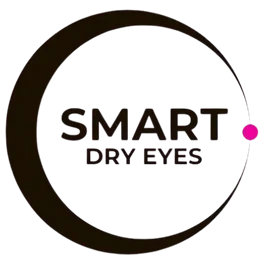
The “Smart Dry Eyes” concept follows an innovative approach to the co-management of patients with dry eye disease, based on close collaboration between opticians/optometrists and specialized ophthalmologists.
Background:
Many ophthalmology practices face long waiting times due to limited capacity. At the same time, there is increasing demand for dry eye treatment—a widespread condition that can significantly impair patients’ quality of life.
Goal:
The Smart Dry Eyes concept aims to provide patients with faster and more efficient care by ensuring low-threshold diagnostics and follow-up through opticians and optometrists, while specialized diagnostics and therapy are performed by trained ophthalmologists.
Approach:
- Low-threshold Diagnostics:
Opticians and optometrists conduct the initial examination and diagnostics. This relieves ophthalmology practices and shortens patient wait times. The eye care professionals perform tests that form the basis for further treatment. - Telemedical Interpretation:
Diagnostic results are transmitted via telemedicine to specialized Smart Dry Eyes ophthalmologists, who interpret the test results and make a diagnosis. This telemedical component saves time and enables flexible, location-independent collaboration. - Specialized Therapy:
Patients requiring specific treatment are referred to SDE specialists who implement the innovative SDE therapy concept. - Follow-up by Opticians:
After therapy, patients return to their optician or optometrist for follow-up and monitoring. This closes the treatment chain, allowing patients to continue care in a familiar environment.
Benefits for Patients:
- Improved access to treatment: Patients benefit from shorter wait times and continuous care.
- Standardized modern diagnostics: Advanced diagnostic technology allows for comprehensive analysis of key tear film parameters, which were previously unavailable in most care centers. This enables targeted treatment strategies.
- Integrated care: The concept promotes interdisciplinary collaboration, contributing to holistic, patient-centered care.
Benefits for Opticians:
- Expanded service offerings: By integrating diagnostic and follow-up activities in dry eye care, opticians can broaden their service portfolio. This enhances their appeal and relevance to customers by offering more comprehensive care.
- Positioning as experts: Opticians involved in diagnosing and following up with dry eye patients can establish themselves as experts in this field, strengthening their reputation and customer trust in their expertise.
- Customer loyalty and retention: Regular follow-up care fosters stronger relationships between opticians and clients. Satisfied customers are more likely to return for additional services (e.g., eyewear purchases, eye exams).
- New revenue streams: Conducting diagnostic tests and follow-up examinations opens up additional income opportunities. These extended services can be billed separately, contributing to the economic stability of the practice.
- Interdisciplinary collaboration: Working with ophthalmologists and being part of a medical network creates new professional contacts and opportunities for knowledge exchange, potentially leading to further cooperation.
This model could significantly improve care for dry eye patients in the future by optimally combining modern technology and a cooperative network of professionals.
Diagnostic Site

Opticians
Optometrists
Data Analytics Center

Dry Eye Expert (Analytics and AI)
Treatment Center

Ophthalmologists
Trained Physicians
Triscan Azure Solution Instance
The sites can communicate via a Triscan Azure Solution Instance (cloud or on premise data center) for decision support, referrals and outcome monitoring.
Patient’s Portal
Results will also be displayed in patient portal allowing patients full data access and control.
